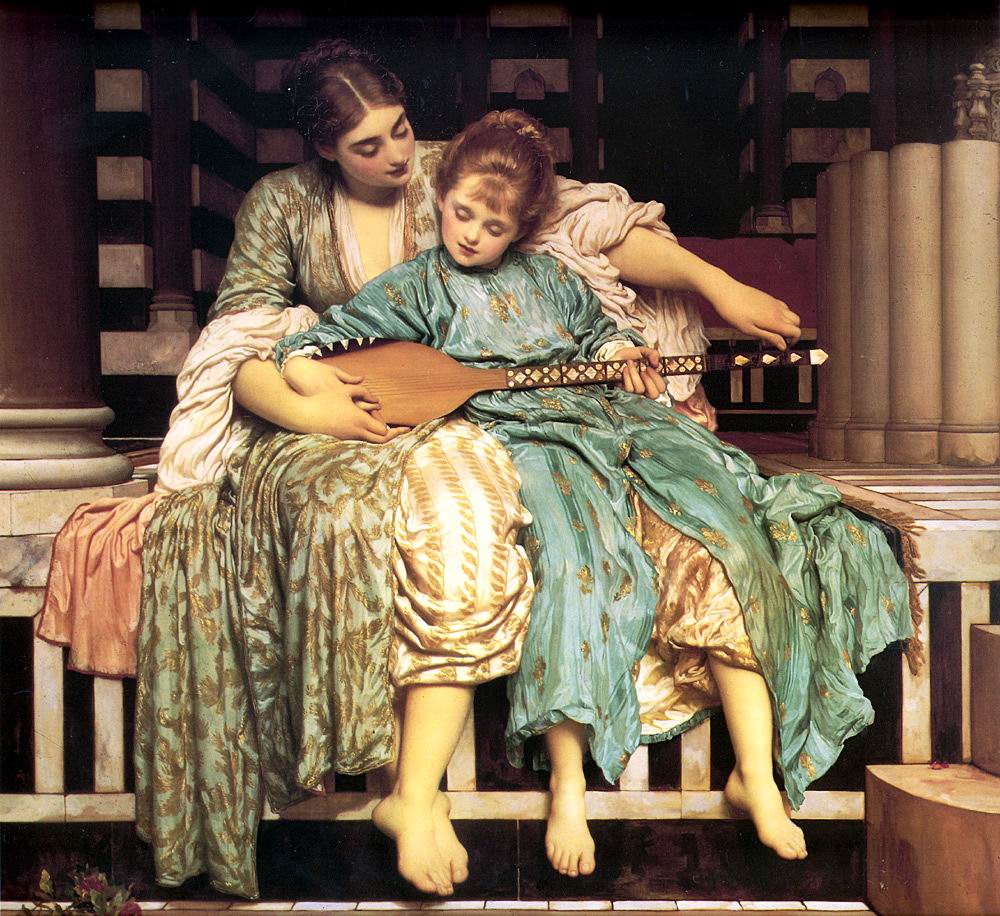

Generally, the composition and glowing color of the picture reflect the influence of such 16th-century Venetian painters as Giorgione and Titian. Leighton appears to have had difficulty in painting it – on close inspection, the oranges look as though they have been enameled. The soft tones and accuracy with which Leighton painted the couple contrasts obviously with the harshness of the orange tree behind them. Importantly, his hands are painted in fine detail, emphasizing how crucial they are to his work. The Italian man who sat for the newly married painter occurs often in Leighton's work: he was apparently one of the artist's favorite models. This is an interesting composition for Leighton, who usually veered towards Classical images and, in particular, favored nudes – the latter were so common in his work that many of his pictures had to be removed from the 1857 exhibition of English art that toured America, because they gave offense. 1864 and currently housed at the Museum of Fine Arts, Boston.
.jpg)
Intelligent, cultured, and of distinguished appearance (although rather austere), he was one of the chief adornments of London society.The Painter's Honeymoon is a painting by Frederic Leighton, 1st Baron Leighton, produced c. In spite of this success, Leighton was for several years regarded as an alien presence in the British art world, but from the mid-1860s he enjoyed a level of worldly success that was matched perhaps only by Millais, his almost exact contemporary: he became president of the Royal Academy in 1878, was made a baronet in 1886, and a few days before he died was raised to the peerage, the first (and so far only) British artist to be so honoured. It was not until 1859 that he settled in England, but he had earlier made his name with Cimabue's Celebrated Madonna is Carried in Procession through the Streets of Florence, which he painted in Rome: it was exhibited at the 1855 Royal Academy exhibition and bought by Queen Victoria (it is now on loan from the Royal Collection to the National Gallery, London). He travelled widely in Europe as a boy and his artistic education was gained principally in Frankfurt, Rome, and Paris.

English painter, draughtsman, and occasional sculptor, one of the dominant figures of late Victorian art.

(Born Scarborough, 3 December 1830 died London, 25 January 1896).


 0 kommentar(er)
0 kommentar(er)
